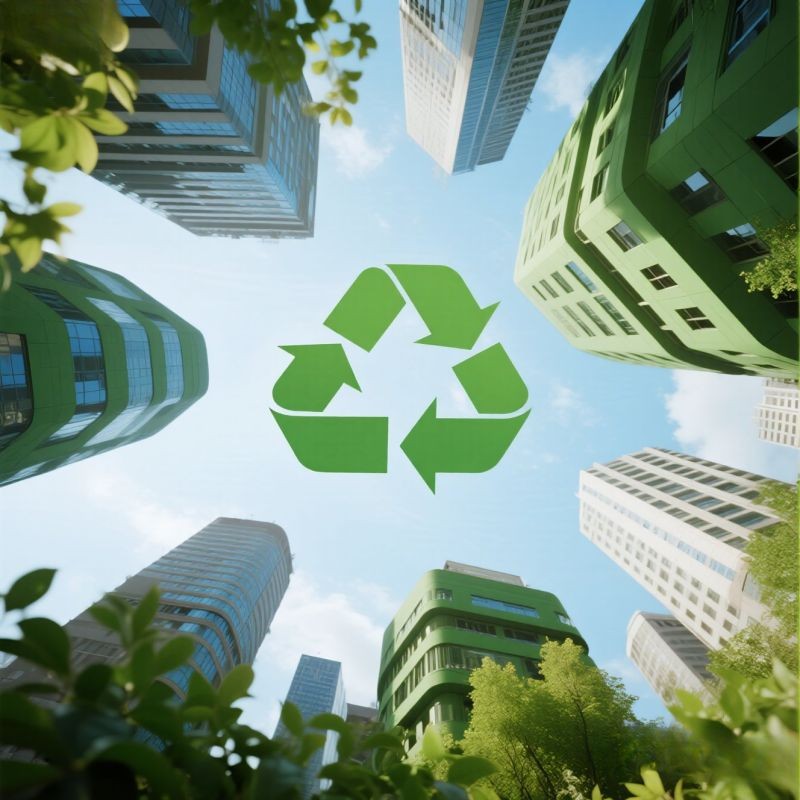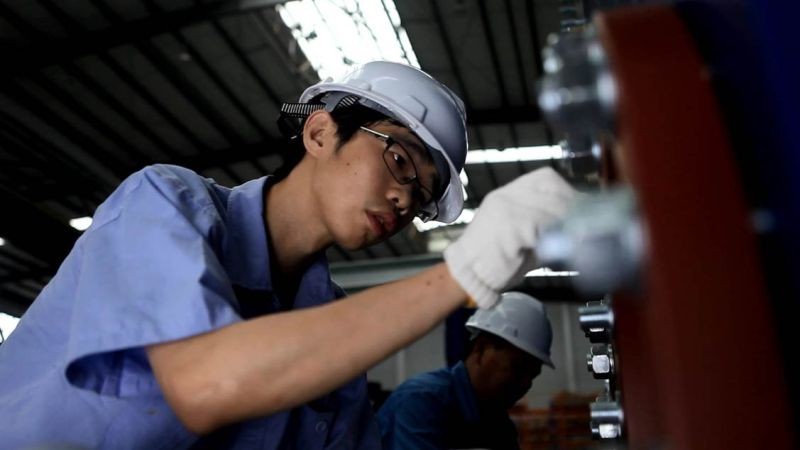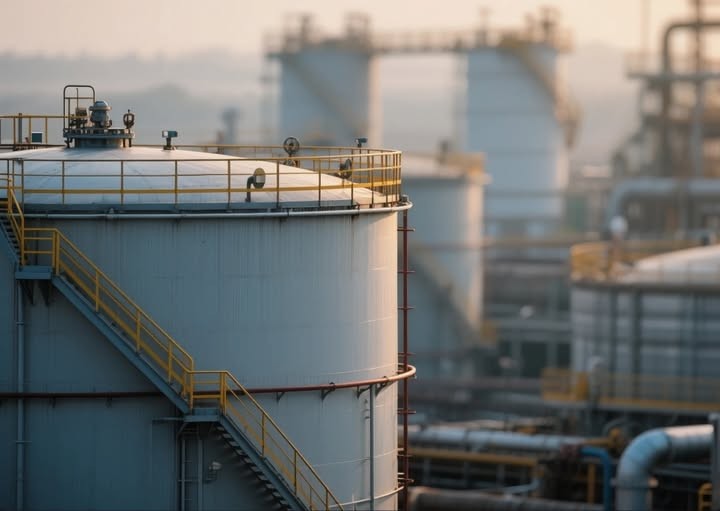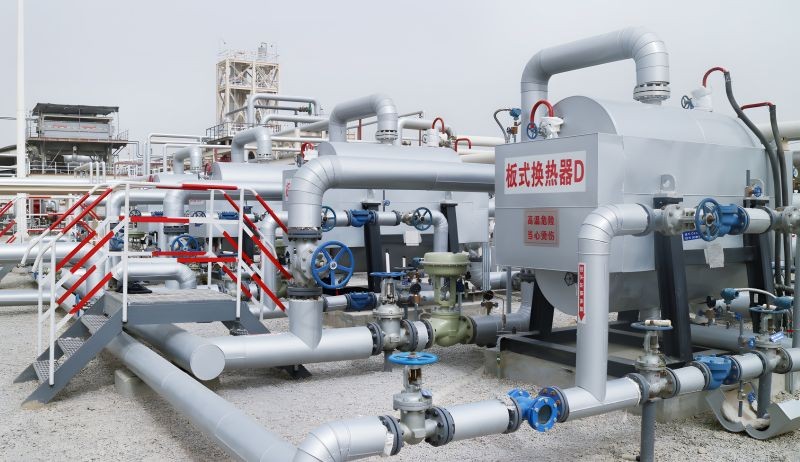Minimize Environmental Harm with Plate Heat Exchangers
A commercial plate heat exchanger offers industries a powerful tool for reducing environmental harm. Improved forecasting and optimized designs help facilities lower energy waste and emissions. For example:
Enhanced energy forecasting accuracy enables organizations to cut unnecessary energy use and reduce greenhouse gas emissions.
Efficient heat transfer processes in plate heat exchangers decrease energy requirements, shrinking carbon footprints.
Smart control systems and advanced materials increase efficiency and extend equipment lifespan.
These advancements support cleaner, more sustainable operations.
Plate Heat Exchanger Energy Efficiency

Reducing Energy Consumption
Ideal plate heat exchanger help organizations cut energy use in many industrial and commercial settings. Their advanced design allows for efficient heat transfer, which means less energy is needed to achieve the same results as older systems. Some organizations have reported energy savings of up to 30% after switching from traditional shell-and-tube heat exchangers. This improvement comes from the unique plate structure, which increases turbulence and optimizes flow patterns. These features allow for better heat transfer with lower pressure drops.
A comparison with other heat exchanger types highlights several advantages:
Plate heat exchangers show superior thermal performance and reduced energy consumption.
Advanced plate designs improve efficiency and reduce fouling.
Compact design supports environmental sustainability by using less material and water.
Replacing lower-grade exchangers with high-efficiency models can reduce pump power consumption by over 55%.
These benefits lead to lower operational costs and support long-term savings. Their modular design also makes maintenance easier, which further reduces downtime and expenses.
Maximizing Heat Recovery
Industries use plate heat exchangers to recover heat from processes that would otherwise waste energy. This approach not only saves energy but also supports circular economy principles. For example, use plate heat exchangers to achieve a temperature difference of only 1 Kelvin between fluids, which shows excellent heat recovery. The compact design allowed for easy upgrades and use on offshore platforms.

Plate Heat Exchanger and Emission Reduction
Lowering Greenhouse Gas Emissions
Many industries use plate heat exchangers to cut greenhouse gas emissions. These systems recover heat from waste streams that would otherwise escape into the environment. By capturing and reusing this energy, facilities lower their energy needs and reduce their carbon footprint. Plate and frame heat exchangers can restore up to 95% of waste heat, which leads to significant energy savings. Their modular design allows easy integration into manufacturing, power generation, and HVAC systems.

A fusion-bonded brazed plate heat exchanger supports sustainability by recovering waste heat in industrial and power generation processes. This approach improves energy efficiency and reduces carbon emissions. Some facilities have achieved measurable results:
Application / Study | CO2 Emission Reduction | Description |
Hospital cooling system | 60% reduction | Used low-emission steel and fossil-free production methods. |
Total heat exchangers (Guangdong Province) | 140,000 tons annually | 12% of the region's carbon reduction target. |
Nanofluid-enhanced double pipe heat exchanger | From 83.3 kg to 81 kg CO2 | Used 0.3 vol% nanofluid instead of water. |
These results show that plate heat exchangers help organizations meet strict environmental goals.
Preventing Air Pollution
Plate heat exchangers also play a key role in preventing air pollution. Their high heat recovery rates—often around 90%—outperform traditional shell and tube exchangers, which recover about 50%. This efficiency reduces waste heat and lowers emissions that contribute to air pollution.
Plate air-to-air heat exchangers separate supply and exhaust air streams, preventing cross-contamination and maintaining indoor air quality.
Efficient heat recovery reduces energy use, which lowers pollution from power generation.
Advanced plate designs, such as dimple and wave plates, improve heat transfer and durability in demanding environments.
In automotive paint booths, these systems recover heat from exhaust air, reducing both energy loss and greenhouse gas emissions.
Replacing older systems with plate heat exchangers in industries like phosphoric acid production has led to energy savings of up to 30% and less pollution. Their compact design and closed cooling circuits also minimize wastewater pollution, supporting cleaner operations.
Plate Heat Exchanger for Water Conservation
Reducing Water Usage
Industries often use large amounts of water for cooling and heating processes. A plate heat exchanger helps companies lower their water consumption. Its efficient design allows for better heat transfer, so systems need less water to achieve the same results. Many facilities choose closed-loop systems with plate heat exchangers. These systems recycle water within the process, which reduces the need for fresh water intake.
Note: Closed-loop systems also help prevent water loss from evaporation or leaks.
Some benefits of reducing water usage with plate heat exchangers include:
Lower utility costs for water supply and treatment
Less strain on local water resources
Improved compliance with environmental regulations
A food processing plant, for example, replaced its old cooling system with a plate heat exchanger. The plant reported a 40% drop in water usage within the first year.
Enhancing Water Recycling
Plate heat exchangers also support water recycling efforts. Their compact structure and high efficiency make it easier to reuse water from one process in another. Facilities can recover heat from wastewater and use it to preheat incoming water. This approach saves both water and energy.
Many industries use these systems to treat and recycle process water. For example:
Beverage factory uses a plate heat exchanger to recover heat from cleaning water, then reuses the water for other cleaning cycles.
Chemical plant recycles cooling water, reducing both water withdrawal and wastewater discharge.
By enhancing water recycling, companies reduce their environmental impact and save on operational costs.
Minimizing Waste with Plate Heat Exchanger
Reducing Material Waste
Industrial operations often generate significant material waste during heat transfer processes. A compact plate heat exchanger addresses this challenge through its efficient and thoughtful design. The large surface area and thin plates provide high heat transfer efficiency, which reduces fouling and keeps performance at optimal levels. Less fouling means fewer shutdowns for cleaning, so facilities avoid unnecessary material loss.
The design of a plate heat exchanger allows for easy cleaning and maintenance. Removable plates make it simple to access and service the unit, which minimizes downtime and prevents excess material waste. Facilities can quickly replace or clean individual plates without discarding the entire unit. This approach supports a more sustainable operation.
Key features that help reduce material waste include:
High heat transfer efficiency that limits fouling and scaling
Removable plates for straightforward cleaning and maintenance
Compact and customizable design that uses fewer materials for installation
Energy efficiency that indirectly lowers waste from energy production
Use of genuine spare parts to maintain equipment performance and prevent damage
These features work together to help industries cut down on material waste and operate more sustainably.
Extending Equipment Lifespan
A longer equipment lifespan means less waste and lower costs for replacement parts. Plate heat exchangers support this goal by using durable materials and a modular structure. Facilities can replace worn plates or gaskets without replacing the entire system. This flexibility extends the life of the equipment and reduces the volume of discarded materials.

Regular maintenance also plays a critical role. When operators use genuine spare parts and follow recommended service schedules, the plate heat exchanger continues to perform efficiently for many years. This approach prevents early equipment failure and reduces the need for frequent replacements.
By focusing on durability and easy maintenance, industries can keep their systems running longer and reduce their environmental impact.
Sustainable Maintenance of Plate Heat Exchanger
Preventing Fouling and Leaks
Fouling and leaks can reduce the efficiency and lifespan of a plate heat exchanger. Different types of fouling, such as scaling, sediment, and biological growth, often result from specific materials and operating conditions. High fluid velocity helps prevent fouling by increasing shear stress, which keeps particles from settling on the plates. Facilities often use constant flow rates and backflushing to remove particulates before they build up. Port filtration also blocks unwanted particles from entering the system.

Material selection plays a key role in preventing leaks and fouling. Stainless steel alloys, titanium, and advanced Super Alloys™ resist corrosion and reduce the risk of leaks. Cleaning-In-Place (CIP) methods use alkaline and acid solutions to remove deposits without taking the unit apart. Operators monitor temperature, pressure, and flow to detect early signs of fouling or leaks. These strategies help maintain optimal performance and protect the environment.
Tip: Regular monitoring with temperature and pressure transmitters can catch problems early and prevent costly repairs.
Plate Heat Exchanger Design for Environmental Impact
Customizing for Sustainability
Engineers can customize plate heat exchangers to support sustainability goals. They often select advanced plate designs that optimize flow patterns and surface geometries. These features improve heat transfer efficiency and reduce pressure drop, which lowers energy use. Many manufacturers use modular and customizable phe configurations. This approach allows easy scaling and adaptation for different applications, supporting longer product life and resource efficiency.
Note: Alfa Laval reduced metal waste by up to 95% and energy use by up to 30% through design optimization and closed-loop recycling.
These strategies help organizations lower their environmental impact while maintaining reliable performance.
Selecting Eco-Friendly Materials

Material choice plays a key role in the environmental impact of a plate heat exchanger. Stainless steel, titanium, and copper are common options. Stainless steel offers durability but requires significant energy to produce, which increases its carbon footprint. Gaskets often use synthetic rubber, which is not biodegradable and can create disposal challenges.
Manufacturers now explore bio-based or recycled materials for gaskets and other components.
Compact designs use less raw material, reducing waste.
Metals in plate heat exchangers are highly recyclable, though separating mixed materials can be complex.
Life Cycle Assessment (LCA) studies guide designers to select materials with lower embodied energy and better recyclability.
Advanced manufacturing techniques, such as additive manufacturing, help reduce material waste.
By choosing eco-friendly materials and efficient designs, companies can minimize the environmental footprint of their heat transfer systems.
Plate heat exchangers help industries lower energy use, cut emissions, and save water. Their compact design and high efficiency support sustainability in sectors like HVAC, food processing, and renewable energy. Strong regulations and new technologies drive their adoption worldwide. Experts recommend regular maintenance, proper sizing, and smart monitoring to maximize benefits. As more companies focus on decarbonization, the plate heat exchanger stands out as a key solution for a cleaner future.
FAQ
What industries benefit most from plate heat exchangers?
Industries such as HVAC, food processing, chemical manufacturing, and power generation use multi pass heat exchanger. These sectors value energy efficiency, water conservation, and emission reduction.
How do plate heat exchangers help save water?
Plate heat exchangers use closed-loop systems. These systems recycle water within processes. This design reduces the need for fresh water and lowers wastewater output.
Can plate heat exchangers reduce greenhouse gas emissions?
Yes. Plate heat exchangers recover waste heat and improve energy efficiency. This process lowers fuel use and reduces greenhouse gas emissions.
What maintenance practices support sustainability?
Operators clean plates regularly, check for leaks, and use genuine spare parts. These steps extend equipment life and reduce waste.
Are plate heat exchangers recyclable?
Most plate heat exchangers use metals like stainless steel or titanium. These materials are highly recyclable. Facilities can recycle old units to minimize environmental impact.
If you need further consultation and discussion, please feel free to contact us.
Email: info@shphe.com
WhatsApp /Cell: +86 15201818405




